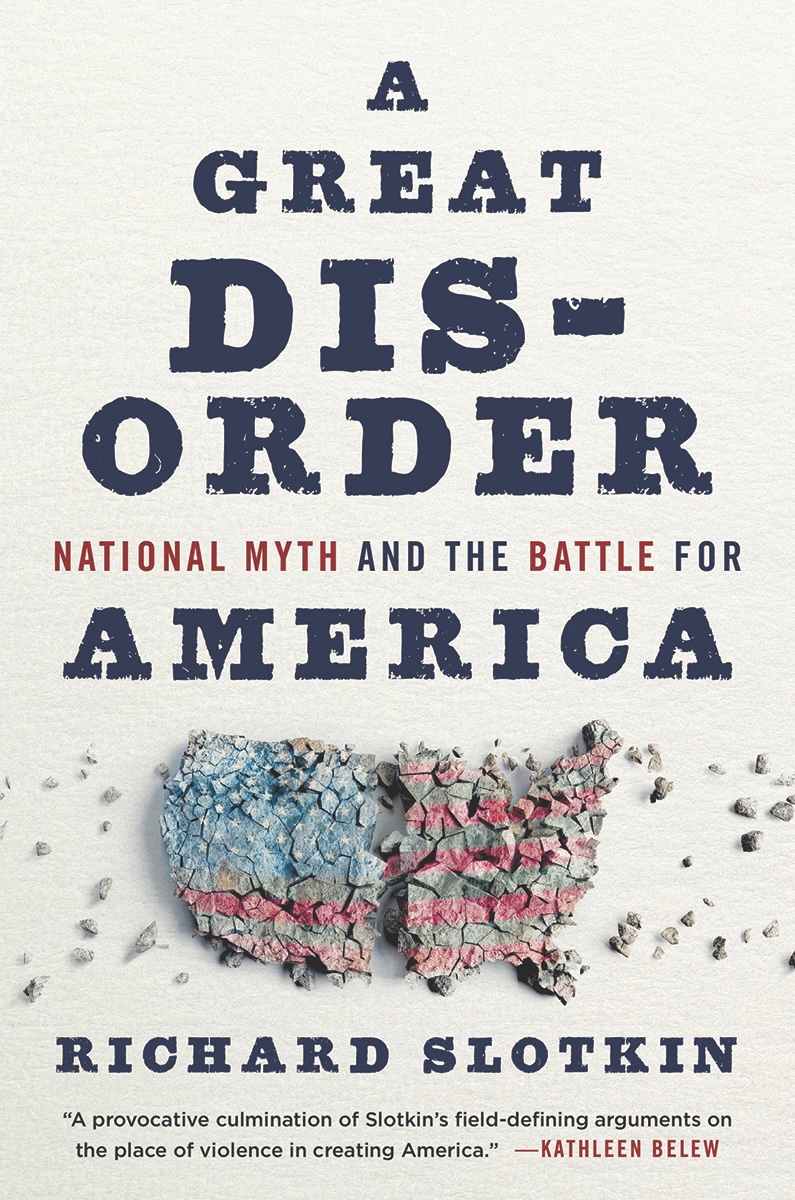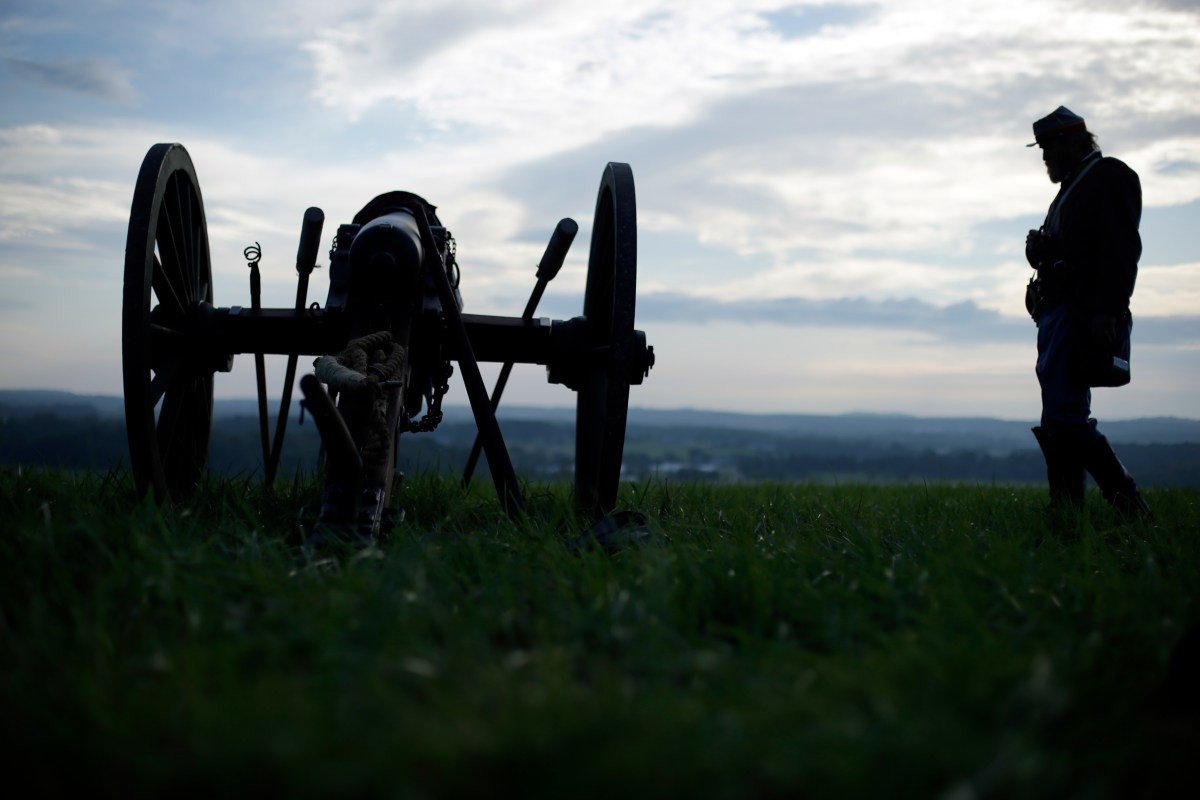Forging a “United States” identity from its component colonies, states, and regional cultures has been a challenge from the moment the federation was created. In 1776, people thought of themselves as Massachusettsians, Pennsylvanians, or South Carolinians, and knew that their respective “countries” (as they called them) had distinct origins, histories, societal models, religious heritages, ethnographic characteristics, and ideas about human equality. They came together to stave off a shared threat, a change in British imperial policy that imperiled the autonomy of their respective societies and political regimes. And even after they’d won and signed on to a new federal constitution, nobody was sure what this United States of America thing was supposed to be. Was it ultimately an EU-like confederation of sovereign states? A nation-state like Prussia or post-revolutionary France? Something else? What principles was it built on? Who belonged? Why should it continue to exist, and on what terms? Even after the political struggles of the antebellum period, the devastating Civil War, the “second founding” and Reconstruction, Jim Crow, the civil rights movement, and the January 6 coup, these vexing questions are still with us today.

Nations and nationhood are themselves ideas, albeit among the most powerful and world-shaping ones out there. They’re “imagined communities,” as the late political scientist Benedict Anderson called them, and as such they’re glued together by narrative and myth. Many other nations were built around stories of shared peoplehood: an assertion that its rightful members are bonded to one another by history, faith, bloodline, and millennia of cohabitation of a homeland. Ours did not. Our regional cultures had footings in separate empires—Dutch, French, English, Spanish—and even the British ones had radically different origins and orientations. The only thing that could hold them together was a mythic story. We’ve been fighting over what that story should be ever since.
Richard Slotkin, Olin Professor of English and American Studies emeritus at Wesleyan University, has been writing about the American mythos for more than half a century, and his detailed studies of the myths of the frontier, Regeneration Through Violence and Gunfighter Nation, were finalists for a National Book Award, in 1974 and 1993, respectively. As someone deeply engaged in crafting an inclusive, liberal democratic national narrative for this country, I was excited to see his new book, A Great Disorder, which aims to bring together his lifetime of insights and scholarship on our national stories to help make sense of our history and today’s frighteningly perilous political environment. Unfortunately, it doesn’t quite deliver on its promises.
There’s a wealth of information between A Great Disorder’s covers. Slotkin has created a succinct, accurate, and eminently readable survey of three centuries of American political history right up to the present. Indeed, the majority of the text details the history of the 21st century, and four chapters that together encompass more than 100 pages are devoted to the first eight years of the ongoing Trump Era. If you’re a historically aware, politics fixated weirdo like me—and if you’re reading the Washington Monthly, you probably are—you likely won’t read much here that you didn’t know already. But for the vast majority of the reading public, this book provides a one-stop “history of now and how we got here,” which is an invaluable service in and of itself.
But when it comes to creating a taxonomy of our competing myths, where they came from, and how they were used or abused to shape our history, A Great Disorder comes up short and, yes, a bit disorderly.
At its founding, nobody was sure what this United States of America thing was supposed to be. Was it ultimately an EU-like confederation of sovereign states? A nation-state like Prussia or post-revolutionary France? Something else? What principles was it built on? Who belonged? Why should it continue to exist, and on what terms?
The publisher’s synopsis says Slotkin has identified five core myths, but the text enumerates at least seven: the Frontier, the Founding, Liberation, the Lost Cause, the Good War, the Movement, and Blue America. And when you parse the text to try to define each one, you’ll find that some of the most important ones are divided into subvariants that are in Manichean opposition to one another, though Slotkin often doesn’t differentiate between them thereafter. And with that shortcoming, the analytical utility of the whole exercise falls apart.
Slotkin defines national myths as “narratives that provide Americans with action scripts for heroic responses to current crises.” He says our civil religion—a devotion to the Constitution and the ideals in the Declaration of Independence—is not such a myth, but rather “the ideological premises for American concepts of legitimacy, nationality, and patriotism.” That sounds to me like the makings of an action script if I’ve ever seen one.
With all that in mind, consider his definition of the myth of the founding. Slotkin says it has fixed narrative elements that include invocations of George Washington as a model of republican virtue; James Madison as the father of the Constitution; Lexington and Concord as heroic fights for freedom; and Valley Forge as a test of heroic resolve. But he goes on to unpack competing variants: Frederick Douglass’s and Abraham Lincoln’s version, which roots America’s purpose to the covenant for universal human equality pledged in the Declaration (the ideological core of the civil religion he’d just excluded from conversation) versus the Stephen Douglas/Confederate version, which excluded all people who weren’t white—and a great many people who were—from the definition of “human.”
A few pages later, when the action turns to secession, Slotkin adds the Confederates’ reliance on the Declaration’s justifications of rebellion to the Founding myth. This is, indeed, what the Confederates did, creating an “action script” that’s been used many times since, but all it shares with Lincoln’s variant is that it cites the same document. And the Confederates weren’t evoking Lexington and Concord (those New England minutemen were now their enemies) just as Douglass wasn’t evoking the slaveholding Washington and Madison (or Madison’s slavery-friendly Constitution) as republican or moral models. Grouping these competing stories as variants of the same myth brings confusion rather than clarity.
Slotkin defines the Frontier myth as an ideology of unregulated environmental exploitation and vigilante action against “savage” enemies to maintain civilization. Here, however, he doesn’t allow for significant variants, which effectively excludes perhaps the most consequential frontier mythmaker of all, Frederick Jackson Turner. Turner’s famous “Frontier Thesis,” first articulated in 1893, argued that the “Edenic” conditions of the trans-Appalachian West stripped away the feudalistic baggage of the Old World and turned Euro-American colonists into Americans, a people conditioned by their environment to practice self-government, civic cooperation, and egalitarian socioeconomic relations. It was his thesis that inspired 20th-century takes on the frontier’s role in American life in textbooks, novels, television, and film, and yet it emphasized neither “savage war” nor rapacious extraction. Instead, Turner airbrushed Indigenous peoples out of his story of westward settlement, wars and all; his frontier wasn’t a source of endless resources but rather a chapter in our history that had just closed, portending challenges to Americans and their character. Turner’s action script influenced presidents, scholars, and schoolchildren precisely because it provided a sanitized, warfare-free narrative of (white) American innocence and virtue.
Slotkin’s other myths include the South’s Lost Cause (the need to use violence to preserve civilization from liberal reformers and inferior races); the North’s Liberation story (the virtuous use of power to further human liberty); the Good War (epitomized by World War II–era “platoon” films pitting ethno-racially diverse, freedom-loving Americans against monocultural ethno-fascist Germans and Japanese); and the Movement (for civil rights, in which people draw on the Declaration’s justification for rebellion to further its promise of equality). There’s reference to a new hybrid, the Blue America myth, which bonds the Movement with the legacy of the New Deal, and is said to have been forged under Joe Biden’s administration.
Slotkin deploys these various myths and variants to try to categorize and explain historical actors and events, but the result is messy. Obama’s rhetoric comes from the Movement myth because it features collective action. The Tea Party allegedly draws on the Founding myth because it cloaked itself in 1770s symbolism, but also from the Frontier myth because they didn’t like Obama’s green energy policies. Trump’s MAGA movement is said to draw on the Founding, Frontier, and Lost Cause myths because it features originalist interpretations of the Constitution (in regards to the Second Amendment), an ideology of nonregulation, and an affinity for vigilante violence and white supremacy. Early in the coronavirus pandemic, the media was tapping on the Good War myth when they referenced World War II in calling Americans to collectively mobilize against COVID-19. Black Lives Matter drew on the Movement and Civil War Liberation myths because they were mobilizing for racial justice.
It’s not that all these linkages are wrong, at least as Slotkin defines these myths, but categorized in this way they don’t really improve our understanding of the world.
I’m going to posit a different paradigm, one I laid out in Union: The Struggle
to Forge the Story of United States Nationhood and also here in the Monthly (see the January 2021 issue). American history is defined by a struggle between two national myths.
There’s a civic national story that says we exist and are defined by our devotion to the liberal democratic ideals in the Declaration: that all humans are granted by God or nature or—as the Declaration says—“Nature’s God,” with sacred rights to survive, to not be tyrannized, to pursue happiness as we each understand it, and to have equal access to the representative self-government that makes it all possible. In addition, as Americans, we’re in a covenant to protect one another’s rights to these things.
Then there’s a story that’s just as old and comparably powerful that says, no, humans are not equal, and only a master race (originally it was the “Anglo-Saxon” one) has the ability to exercise the Declaration’s right; the U.S. is an ethno-state, and a subset of its population has the right to rule and to use authoritarian means to prevent others from violating their sacred birthright.
There’s a civic national story that says that all humans are granted sacred rights to survive, to not be tyrannized, to pursue happiness, and to have self-government. Then there’s a story that says no, humans are not equal, and only a master race has the ability to exercise those rights.
The battle between those two visions explains the history so competently described in Slotkin’s book: the struggles of the antebellum period; the Civil War; Reconstruction; the KKK-driven southern “Redemption”; the Jim Crow–Woodrow Wilson–Birth of a Nation era of ethno-nationalist rule over this country; the civil rights movement and its opponents; BLM versus MAGA; January 6; and all the rest. Organized as variants of these two mythic traditions, his myths make better sense. The civic national myth is, in fact, the mythic substance behind Slotkin’s Lincoln–Douglass Founding myth variant, the Civil War’s Liberation variant, the Good War, and the Movement, each of which is an adaptation to deal with the demands of a particular historical moment. The ethno-national myth spawned the Stephen Douglas Founding myth variant, the Frontier myth (as Slotkin defines it), the Lost Cause, and Trumpism itself.
That’s the battle for America in Slotkin’s subtitle, and he’s absolutely right about one thing: National mythology has defined the battlefield, and it remains its most powerful
weapon.



